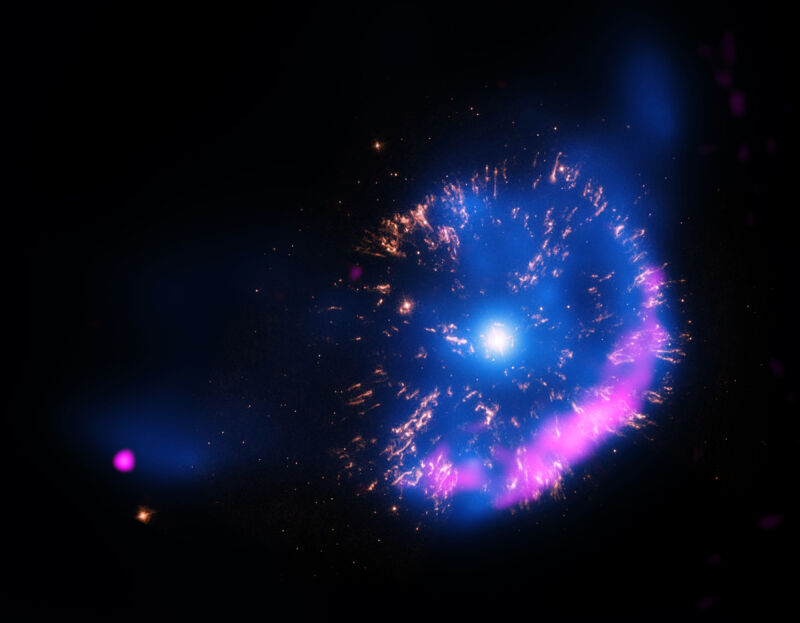Nova explosion visible to the naked eye expected any day now

Enlarge / Aftermath of a nova at the star GK Persei. (credit: NASA/CXC/RIKEN/STScI/NRAO/VLA)
When you look at the northern sky, you can follow the arm of the Big Dipper as it arcs around toward the bright star called Arcturus. Roughly in the middle of that arc, you'll find the Northern Crown constellation, which looks a bit like a smiley face. Sometime between now and September, if you look to the left-hand side of the Northern Crown, what will look like a new star will shine for five days or so.
This star system is called T. Coronae Borealis, also known as the Blaze Star, and most of the time, it is way too dim to be visible to the naked eye. But once roughly every 80 years, a violent thermonuclear explosion makes it over 10,000 times brighter. The last time it happened was in 1946, so now it's our turn to see it.
Neighborhood litterbugThe T. Coronae Borealis is a binary system. It is actually two stars," said Gerard Van Belle, the director of science at Lowell Observatory in Flagstaff, Arizona. One of these stars is a white dwarf, an old star that has already been through its fusion-powered lifecycle. It's gone from being a main sequence star to being a giant star. And in the case of giant stars, what happens is their outer parts eventually get kind of pushed into outer space. What's left behind is a leftover core of the star-that's called a white dwarf," Van Belle explained.